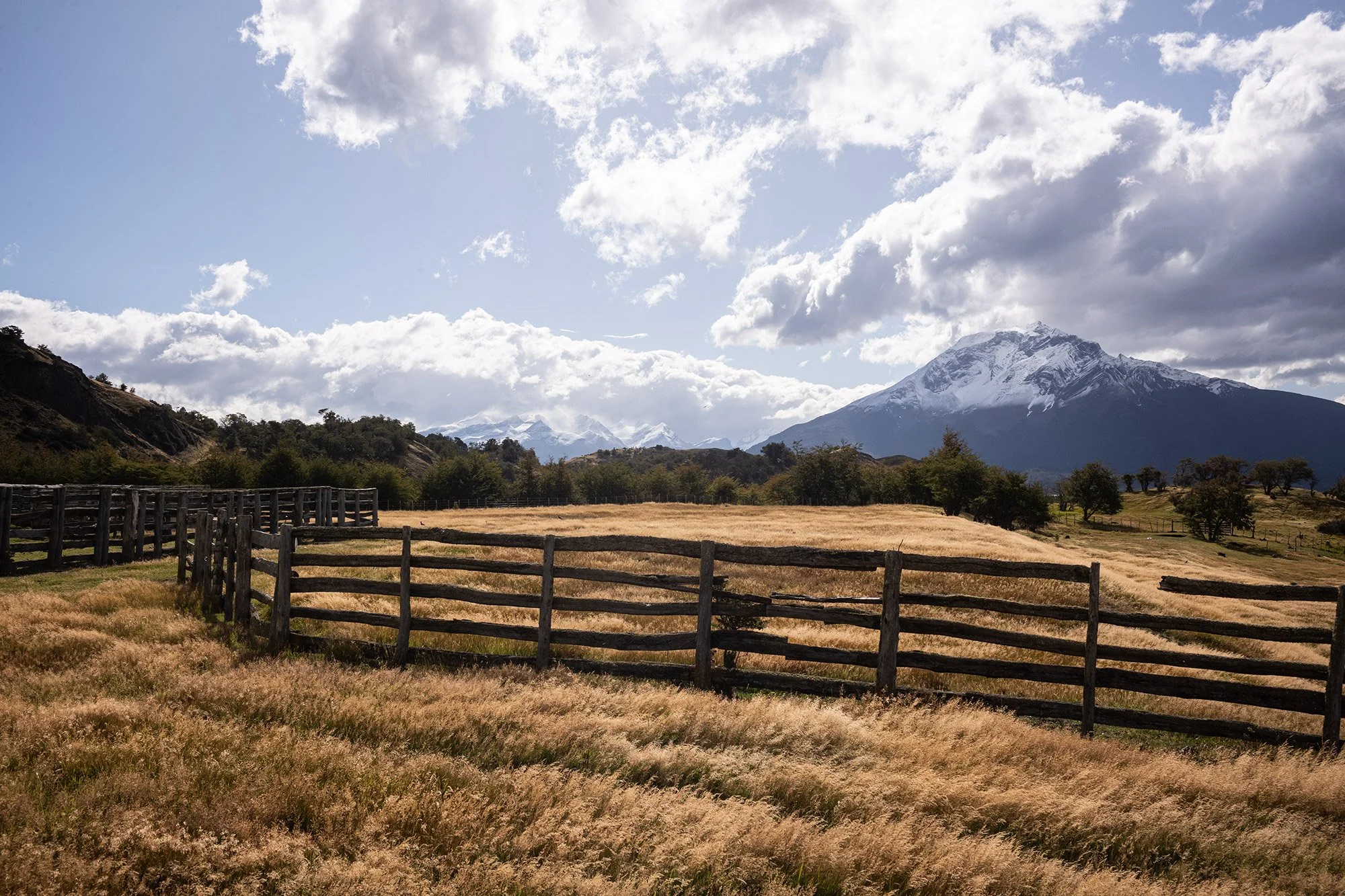
Patagonia II: Part I
A day at the Estancia la Peninsula.
Rodrigo picks us up from our hotel in Puerto Natales and drives us to the boat landing.
It’s our first full day in Patagonia, having arrived the day before. I’ve come from Santiago, my cousin and neice from Connecticut. It’s been a long weekend of travel fro them.
Rodrigo will be our contact for the next week and a half, checking in on our progress and advising us on our next day’s activities. When he drops us off he tells us that this is the Jeep we’ll be driving for the next 10 days. He’ll brief us on everything when we’re back from the estancia.
He introduces us to Laura, the owner of the estancia; Alejandro, who will be our english guide for the day; and Donald, who will seem to do everything else. It’s raining and Laura wears a cowboy hat but seems otherwise unpreturbed by the weather. Alejandro is bareheaded in a flannel shirt.
The boat is waiting for us; we are the last to board. Donald captains; Alejandro acts as first mate.
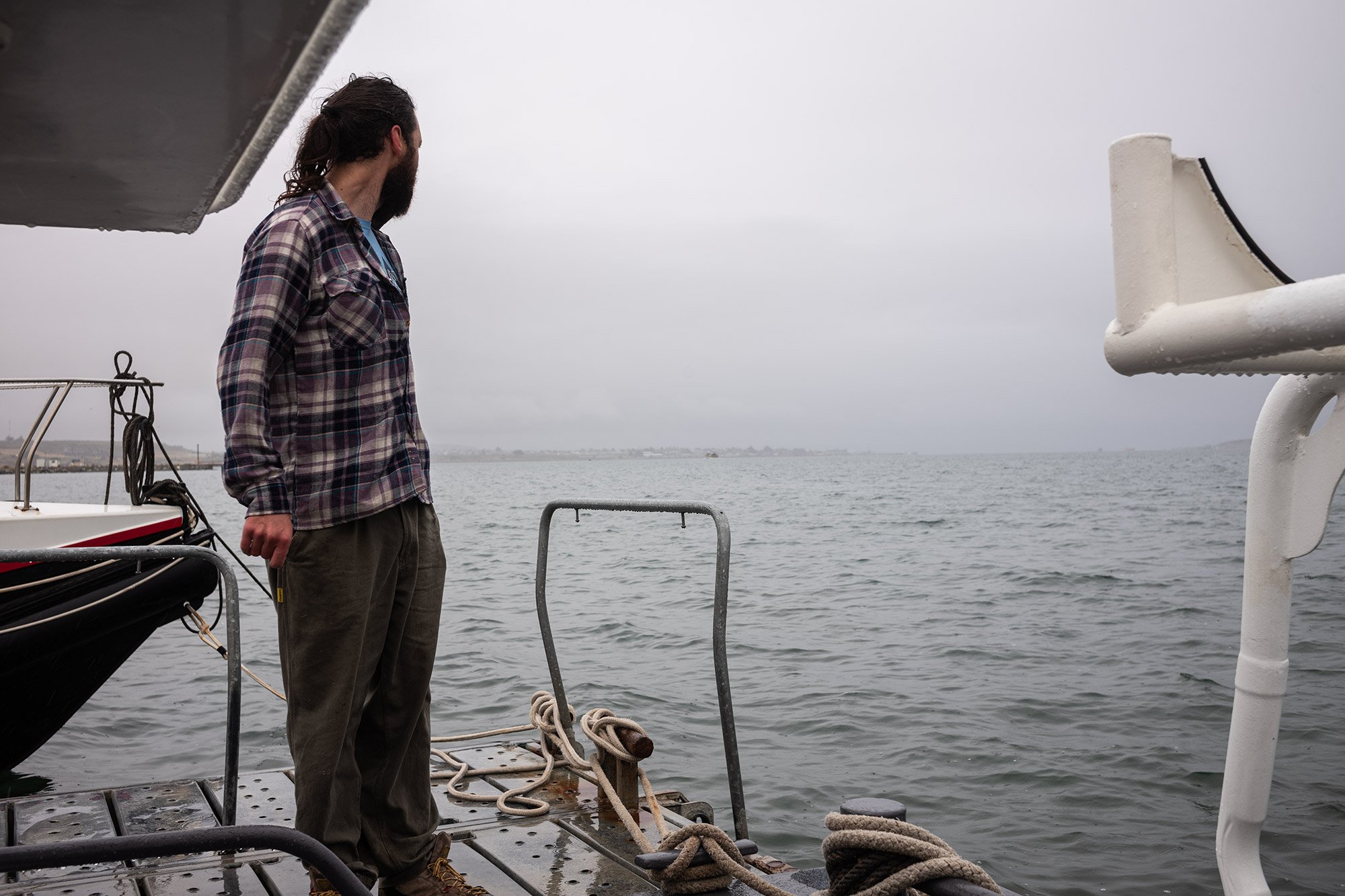
As we sail towards the estancia, Alejandro tells us various facts about Patagonia and the surrounding area. He tells us that while Norway is best known for its fjords, Chile boasts the most coastline formed by fjords. He then tells us exactly what a fjord is.
The estancia itself is located on the banks of the Last Hope Fjord, so named by Captain Juan de Ladrillero, who was searching for the western entrance to the Strait of Magellan. He was unsuccessful.
Alejandro tells us of the local population who used to dive into the cold waters, covering themselves in oil to protect themselves. He is a font of information, using the entire 30 min trip to educate us as much as he can. Unfortunately, I don’t retain much. I’m tired from the early morning the day before and at some point, lulled by the engines of the ship, I fell asleep.


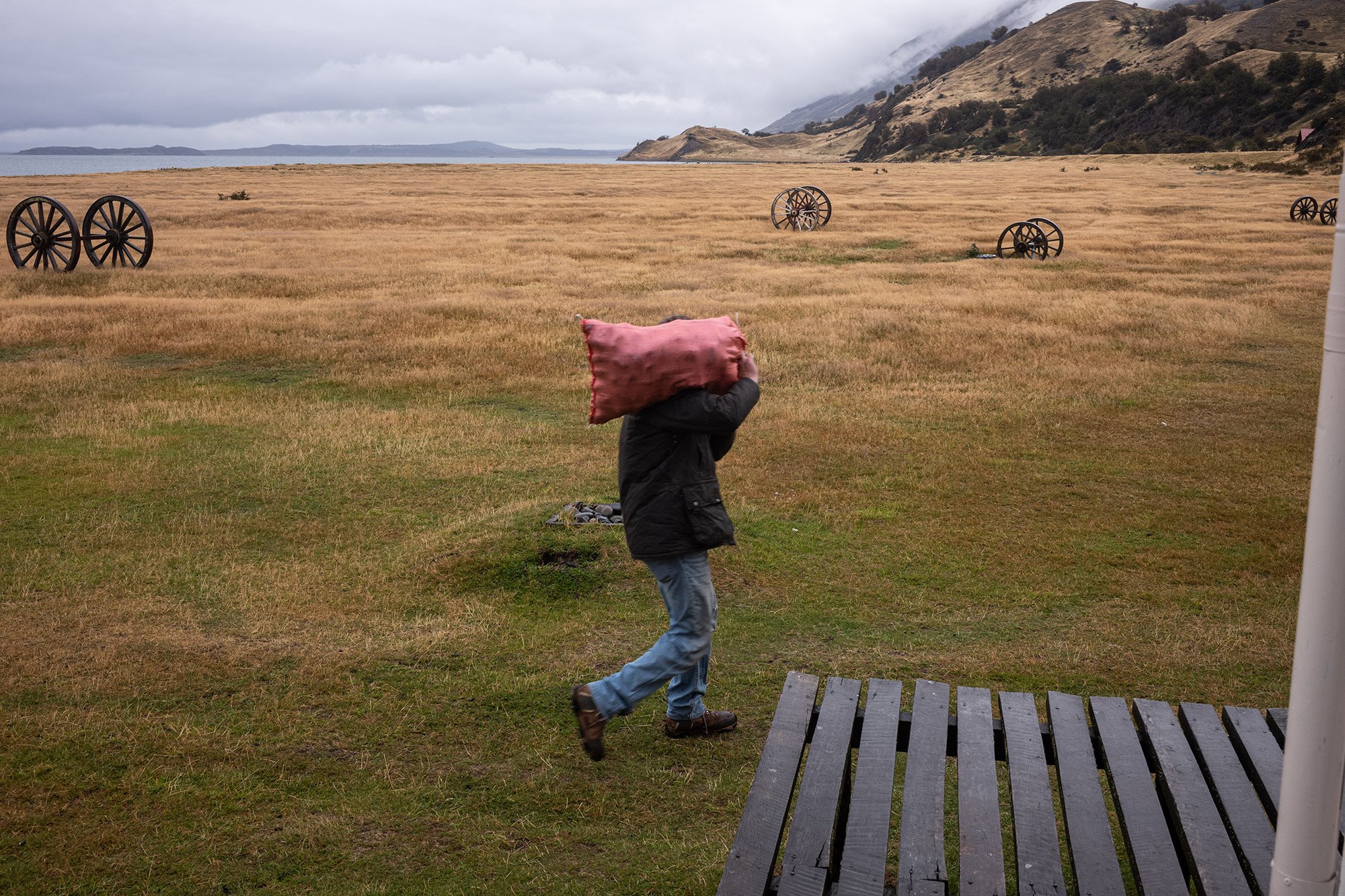
The Estancia la Peninsula is gorgeous. The boat drops us off at a small pier in front of a building that serves as the welcome center and dining room. We are treated to a light breakfast of fried dough and coffee and tea and are told we can leave whatever we want in the foyer. Large windows give us unobstructed views over the estancia and the fjord to the mountains in the distance. Outside, the skies are ever-changing.
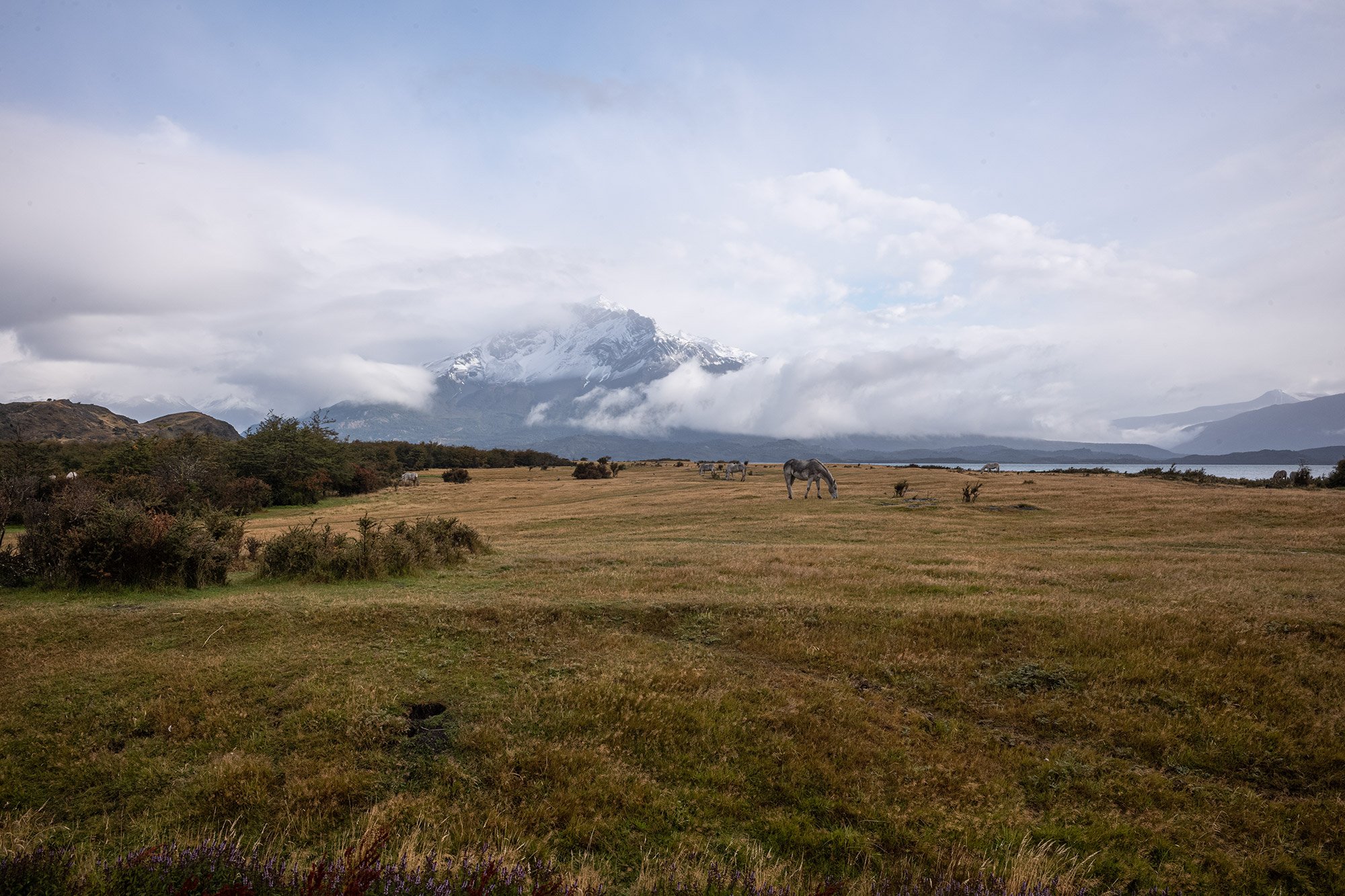
Alejandro leads us to another building behind the main one. There, a man roasts a lamb over a fire made of driftwood that has floated down the fjord. It takes four to five hours to make asado this way, and the man has been preparing out lunch since the morning. Alejandro tells us that it’ll be ready and waiting for us after our excursion on horseback and leads us to the stables.

We are outfitted with gaiters and hats before being lead to our horses. Someone asks what their horse’s name is and is told that the horses don’t have names and don’t respond to them. Alejandro asks how many of us have ridden before and a number of hands are raised. He gives us a safety briefing and instructions on how to approach and handle our horses. Like a boyfriend, he tells us. First a kiss and then a kick if they don’t respond.



We follow Sophie out of the stables and into the plains. Flocks of sheep run alongside of us and cut through across our path to climb into the hills facing the fjord. I feel like I rarely see sheep run and I laugh as I see them racing to get in front of us to join their companions.
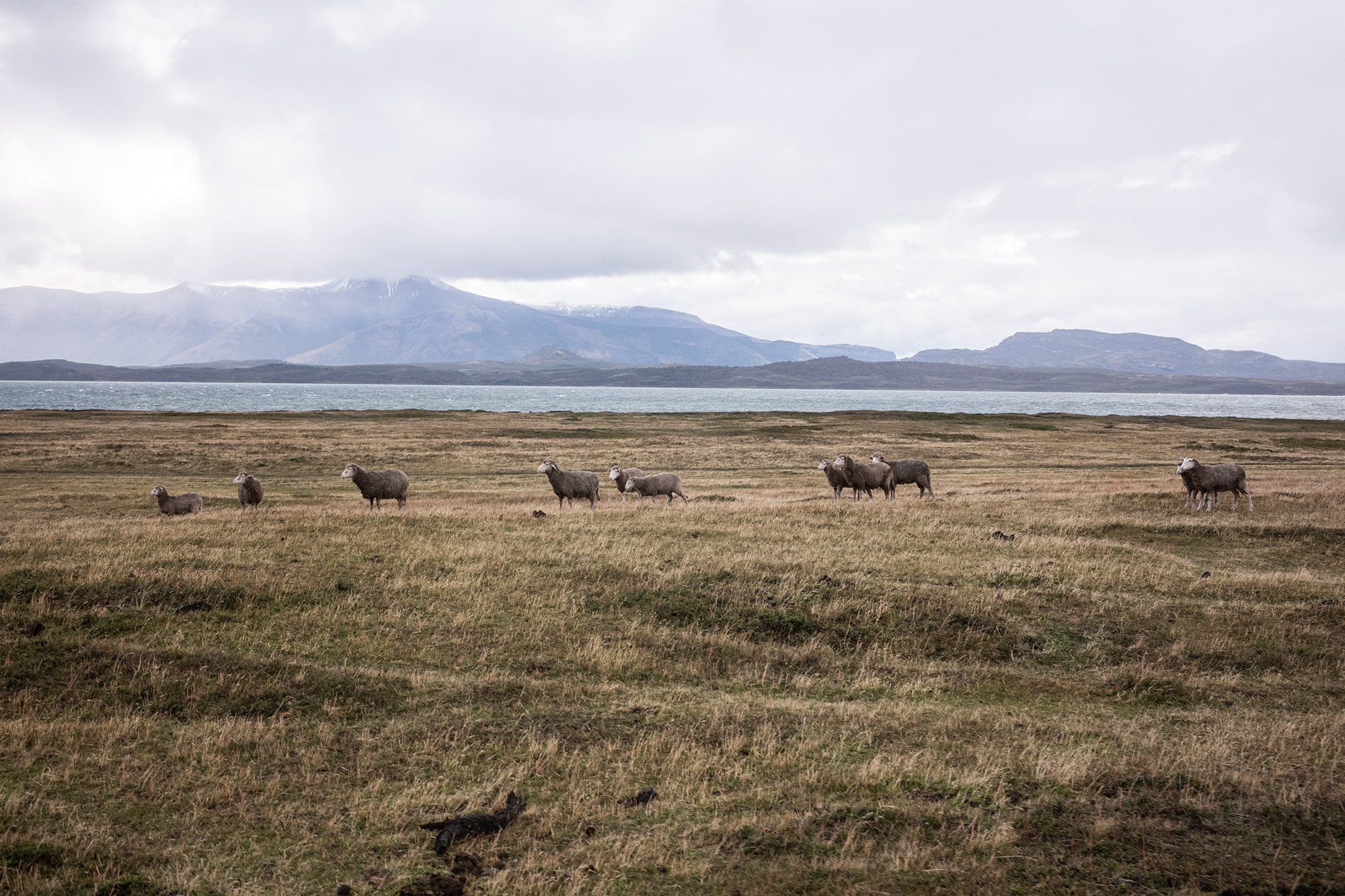



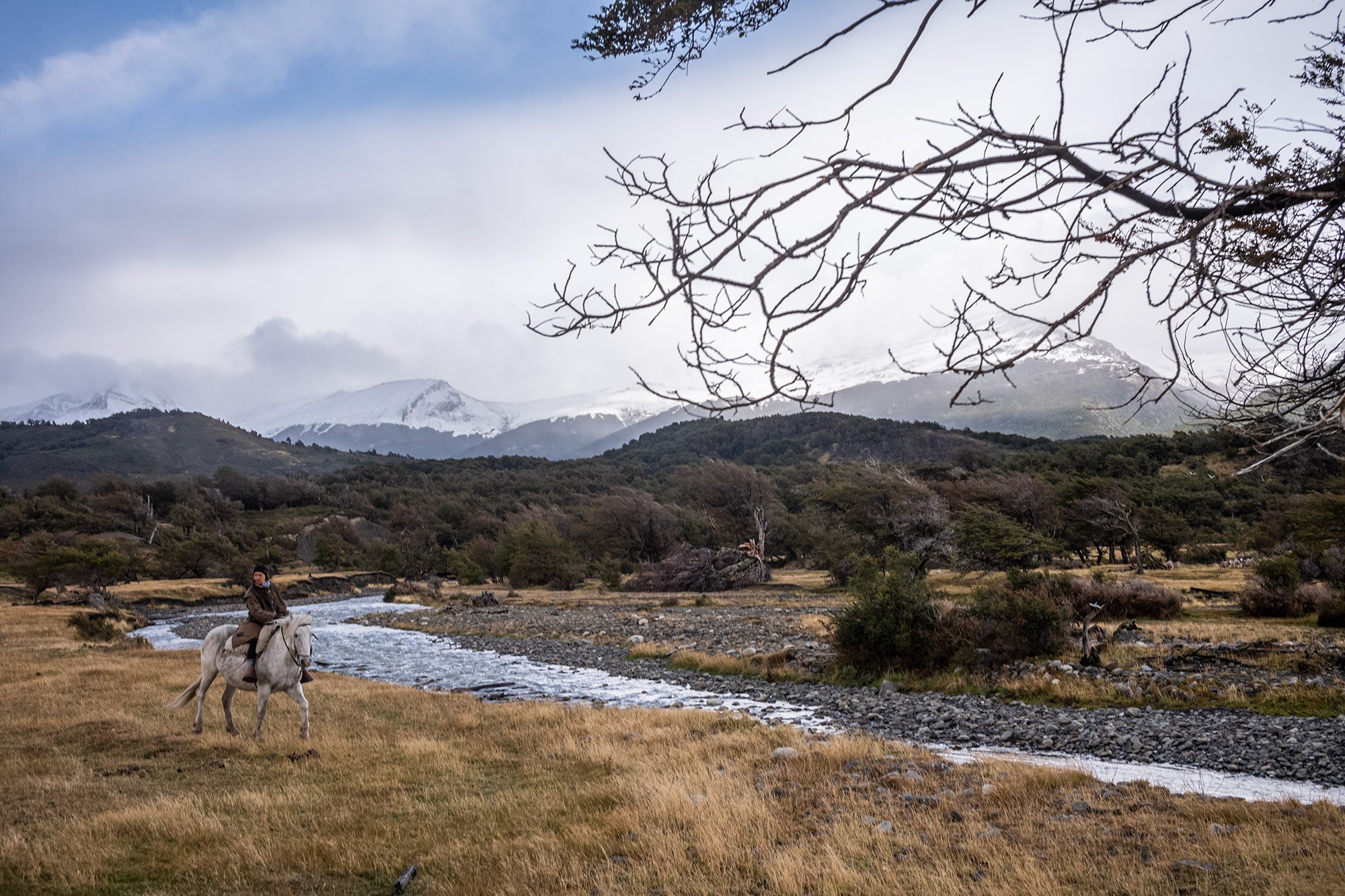
We ride to and then alongside a river before climbing up a hill for photos and the view. The wind is strong on the top of the rise and the horses instinctively turn to face the wind. Sophie has to lead them by the bridle to position them.
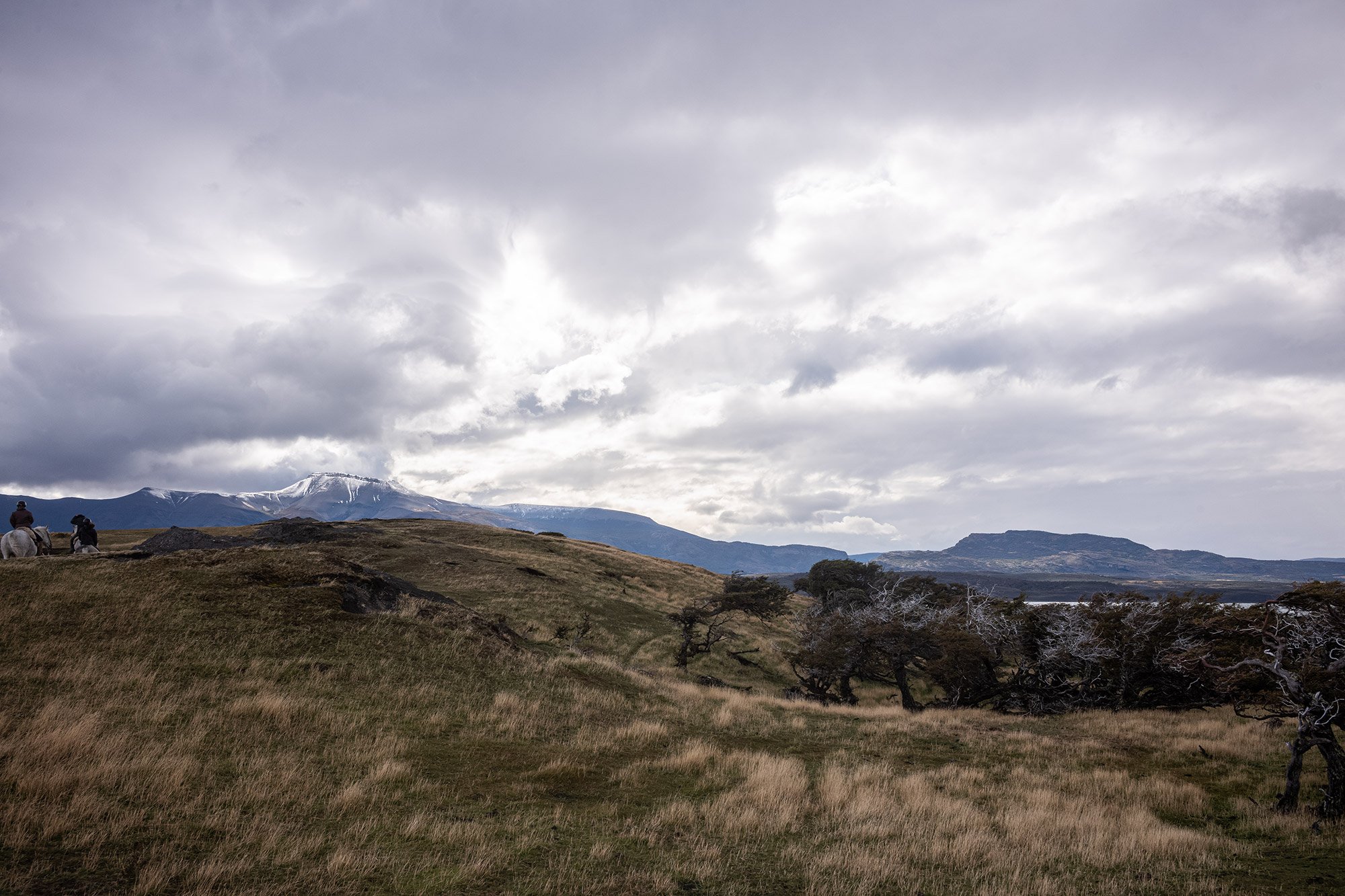



The skies start clearing after we descend and start our ride back to the estancia. First, we see small breaks in the cloud cover, revealing spots of blue sky. And then the breaks slowly become larger and larger and the clouds become lighter and lighter.
At some point, we’re told that at this point in the season we can experience all four seasons in the same day, and today we’re being given an introduction to what that means. We’ll have a more comprehensive demonstration when we hike to the base of the towers in Torres del Paine.


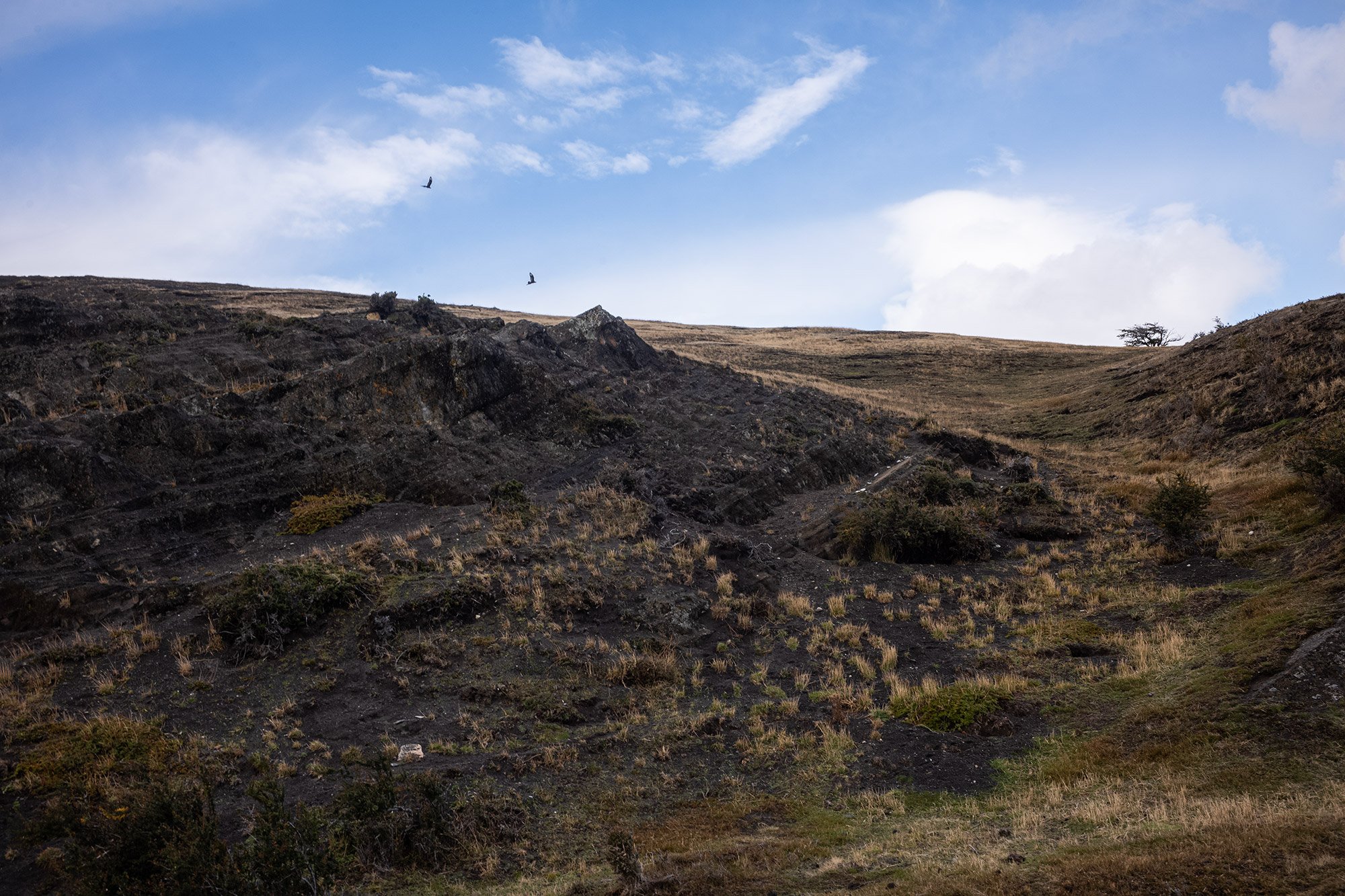
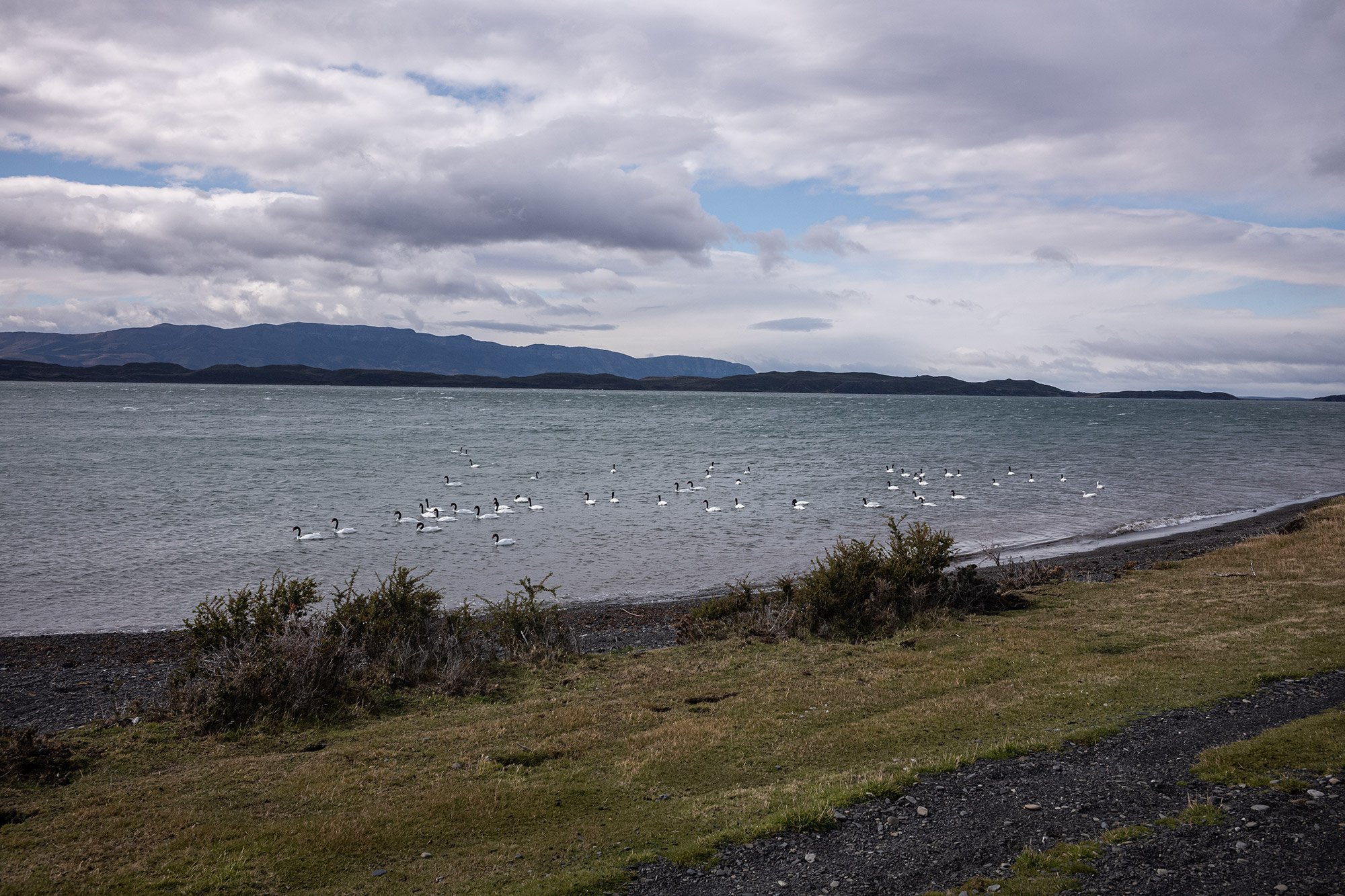

Nearing the stables, we pass a herd of horses in the field. Someone asks if they’re wild. No, comes the answer. they’re just enjoying their day off.

We dismount and leave our horses and gaiters back at the stables. I wish they had given us apples to give them after the ride as a treat. I wonder if we’d be allowed if we brought our own. During the briefing, Alejandro told us not to let them eat as we’d lose their respect and control, though I’m not sure how much control we’d have in the first place.
Back at the barbecue pit, our asado is ready to eat. Donald starts butchering the animal and Alejandro passes out pieces of skin and meat to us to sample. It’s amazing; some of the best lamb I’ve ever tasted There’s no gamey flavor that plagues so much of the lamb I’ve had in the states, and it’s perfectly seasoned with just large salt crystals.
As Donald finishes carving, Alejandro invites us back to the main house for dinner.



Lunch is equally fantastic. A selection of salads are on offer along with bread and different cuts of lamb that are served from a tray. More lamb is offered if our plates empty. Red and white wine flow freely. For dessert, we’re given flan.
As we eat we watch as a gaucho rounds up the horses that had been let to graze in the fields. They run right by the windows. It’s a beautiful display and someone mentions that it must be planned just for us.



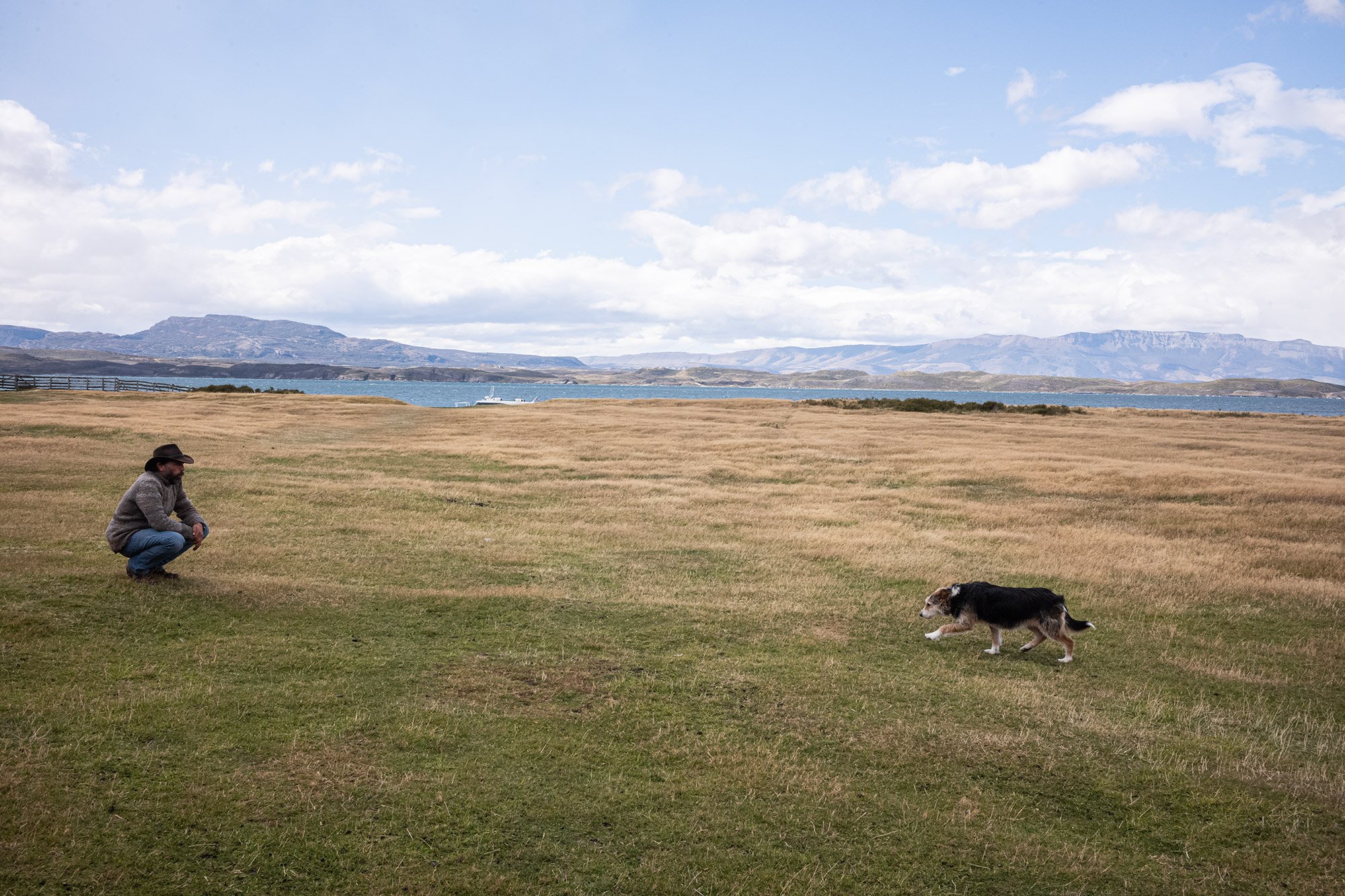
After lunch we’re invited back outside. The day has cleared and we’re to be given a sheep-herding demonstration. A flock of sheep are bunched together, a dog rests nearby.
Donald whistles and the dog comes to him. He whistles some instructions and soon its off, chasing the sheep away and then back with another whistled command. The dog runs the sheep from one side of the field to another, responding to Donald’s commands. I turn to my neice and tell her it’s like Yondu and his spear from the Marvel Cinematic Universe. It’s an incredible display.

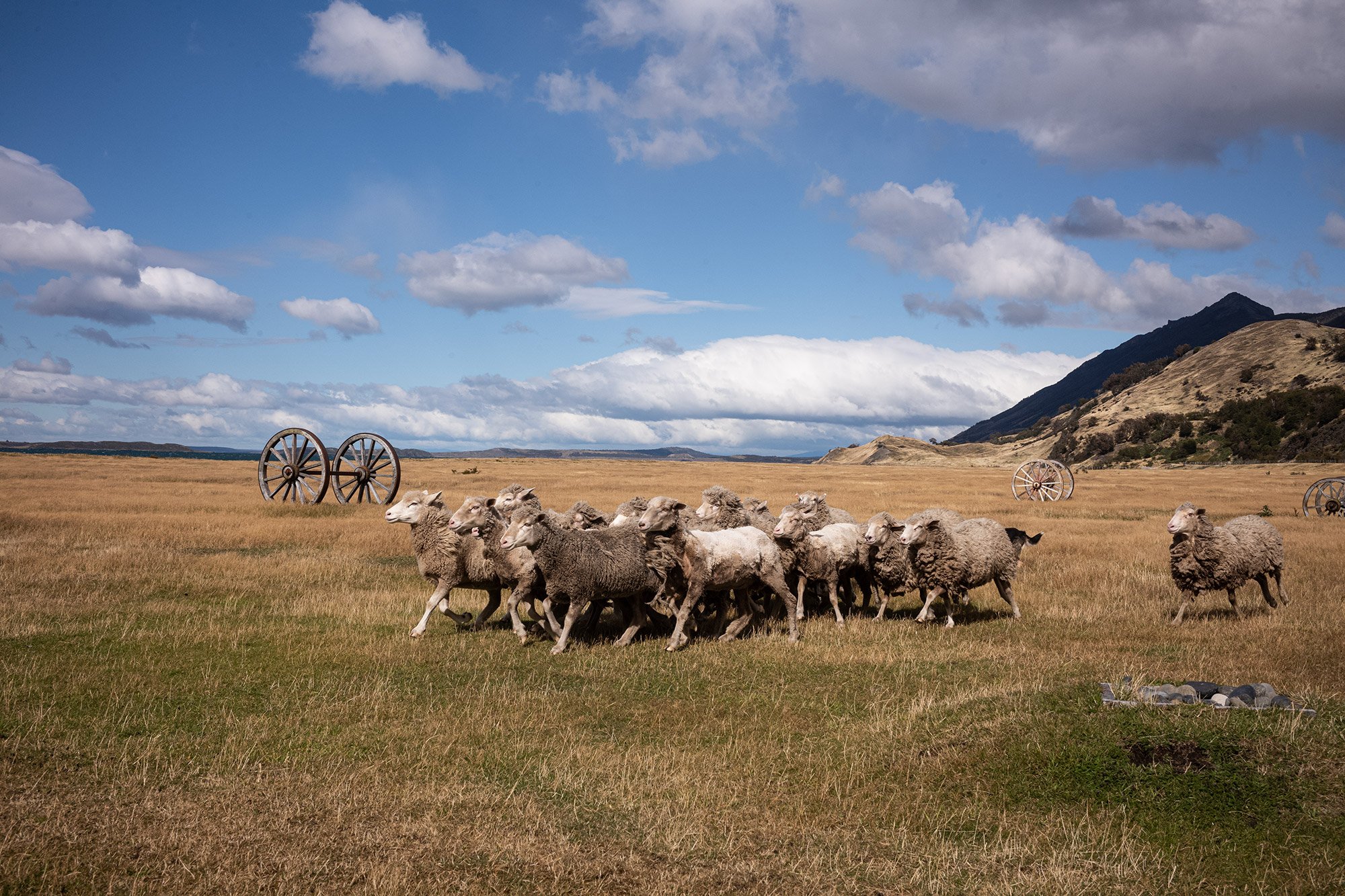


Finally Donald give a command and the dog herds the sheep towards the shearing barn. Donald follows and Alejandro invites us to follow along.
Inside, we see bags of wool waiting to be baled. There’s a machine on the other side that will compress the wool into blocks for shipping. These are left over from the shearing demonstrations. The main work has already been done.
Donald speaks and Alejandro translates. He tells us that it’s late in the season and given the rain and overcast skies there won’t be a shearing demonstration today. They don’t want the sheared sheep to be out in the wet and cold this late in the season. But he walks us through the various areas of the barn and explains how the sheep are lead in and sheared and then let out.
He tells us that a professional shearer can shear a sheep in a minute. Groups of shearers will travel together from estancia to estancia during the season, shearing as they go.
Donald then demonstrates how a sheared pelt is thrown onto a slatted table so that loose dirt and debris can fall to the floor. It’s like a fisherman throwing his net. He then tells us about the different grades of wool and what affects the quality from year to year.

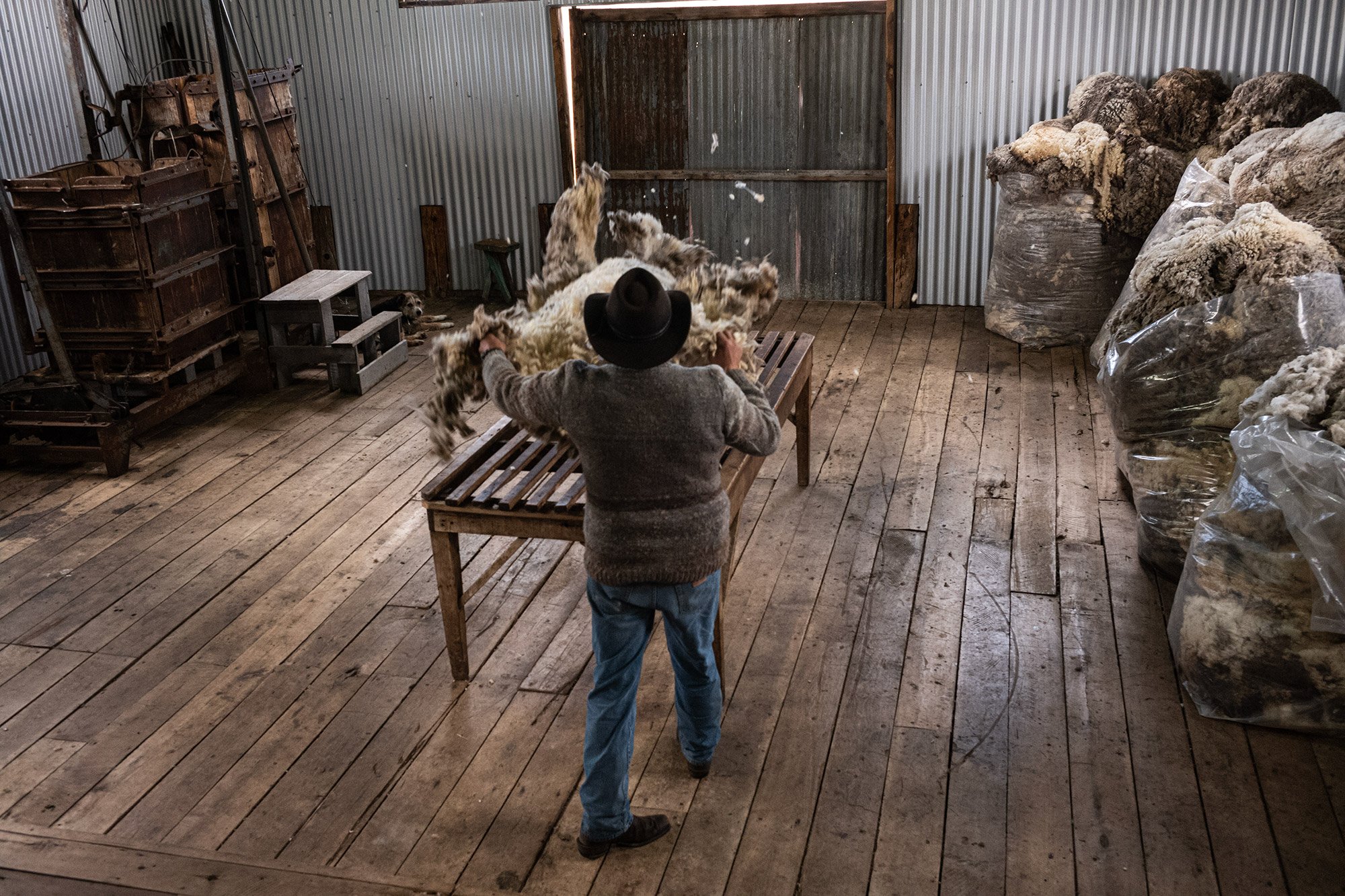

I sit in the corner. The dog has been chained to the baler and I sit on the wooden steps and scratch his head. When the demonstration is done, Donald unchains him and he follows us out of the barn towards the kennels.
Alejandro leads us there and we meet his progeny. They all seem happy to see us and we pet those we can through the chickenwire. Further along there’s a huge white dog guarding over some chickens. Alejandro tells us that the breed is usually aggressive but they’ve raised this one amongst humans as an experiment to see how he’ll react. He’s probably the most excited to see us, and he climbs up onto the fence to help us reach him for pets.

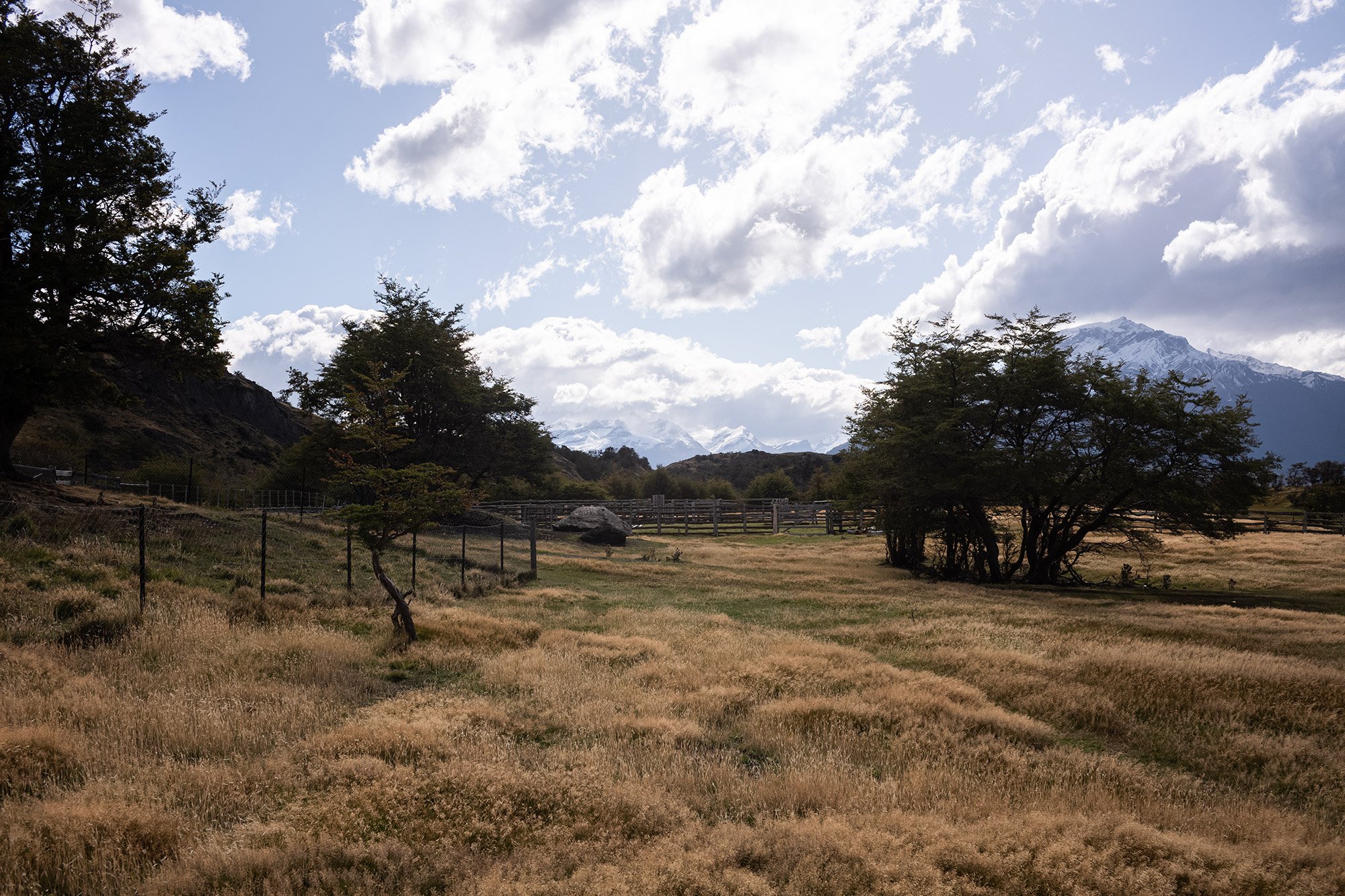
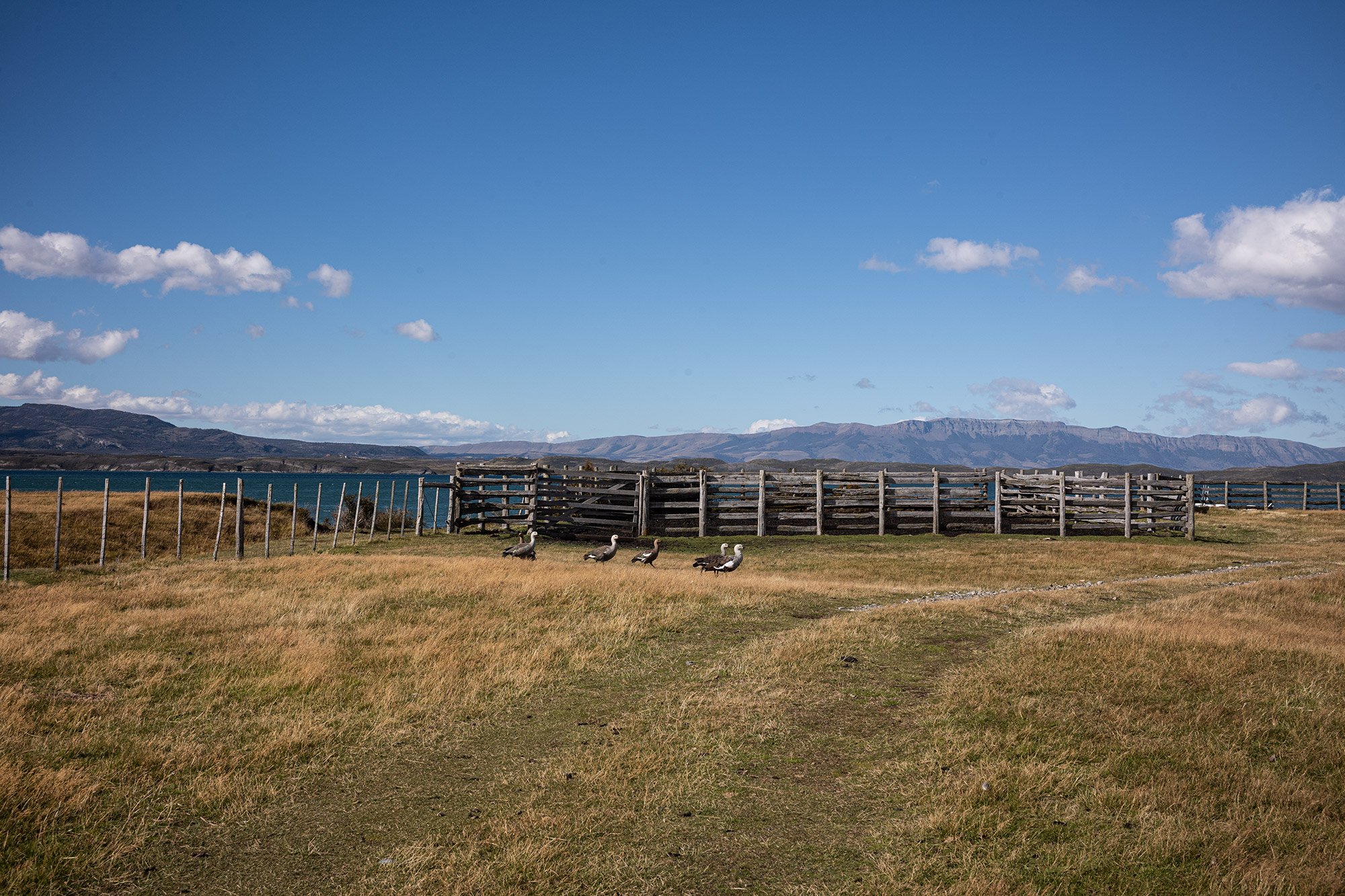

We walk back to the main house for coffee and tea and then it’s time to go. I choose to sit outside along with a French couple on their honeymoon. Nobody speaks. We sit and gaze out over the water at the mountains and grass and fields.






Back at the Jeep Rodrigo points out the cooler full of snacks and water and juice boxes. He tells us that we need to always have the headlights on when we drive as it’s a rule in the park. He also tells us to be aware of the wind conditions as strong gusts could pull the doors off. He tells us to always park into the wind.
He shows us the satellite phone if we need it and a tracker. He tells us that it sends a ping every 20 minutes and he’ll be following along where we are. He shows us an app that shows him where all of the Jeeps are.
He drives us back to the hotel to give us a final briefing. He goes over our itinerary and checks the weather and wind conditions for the next few days. We re-arrange some hikes in response. He pulls out multiple maps and traces our routes, both those we will drive and those we will hike.
It’s a comprehensive overview and makes us even more excited for the days ahead. Finally, he creates a WhatsApp group for us to keep in touch. He tells us he’ll check in every night and make sure we’re prepared for our next day and then bids us ¡Buen viaje!
14 March 2023
🗻








